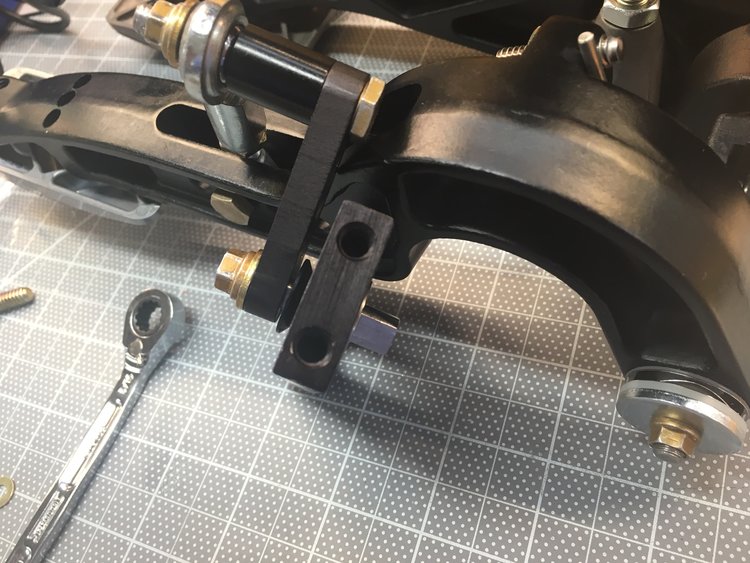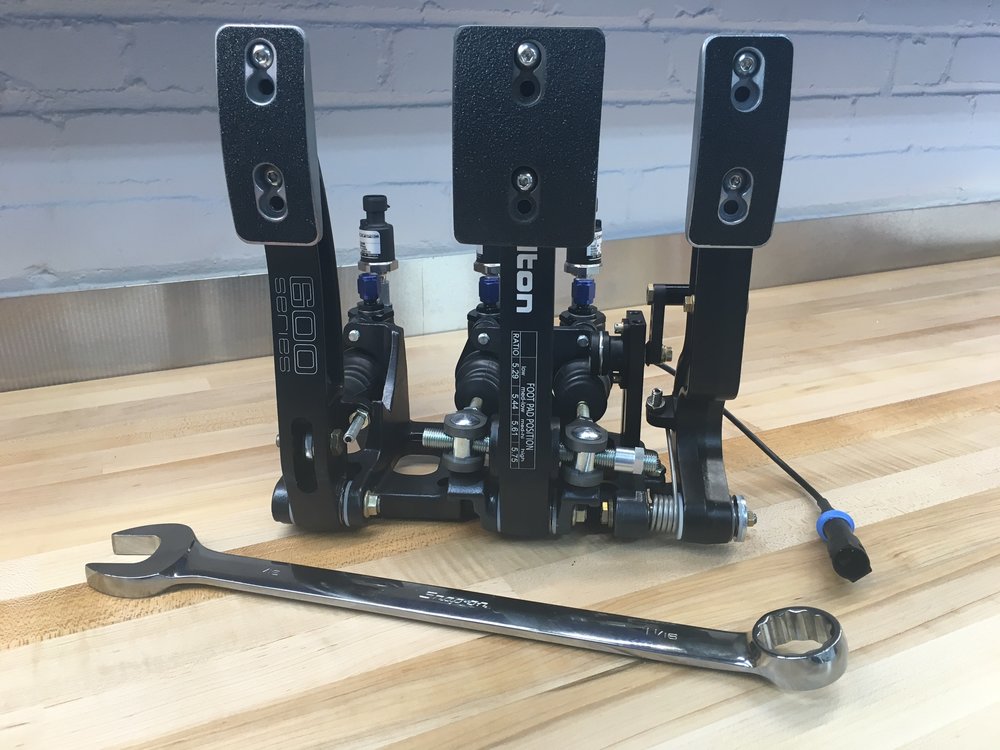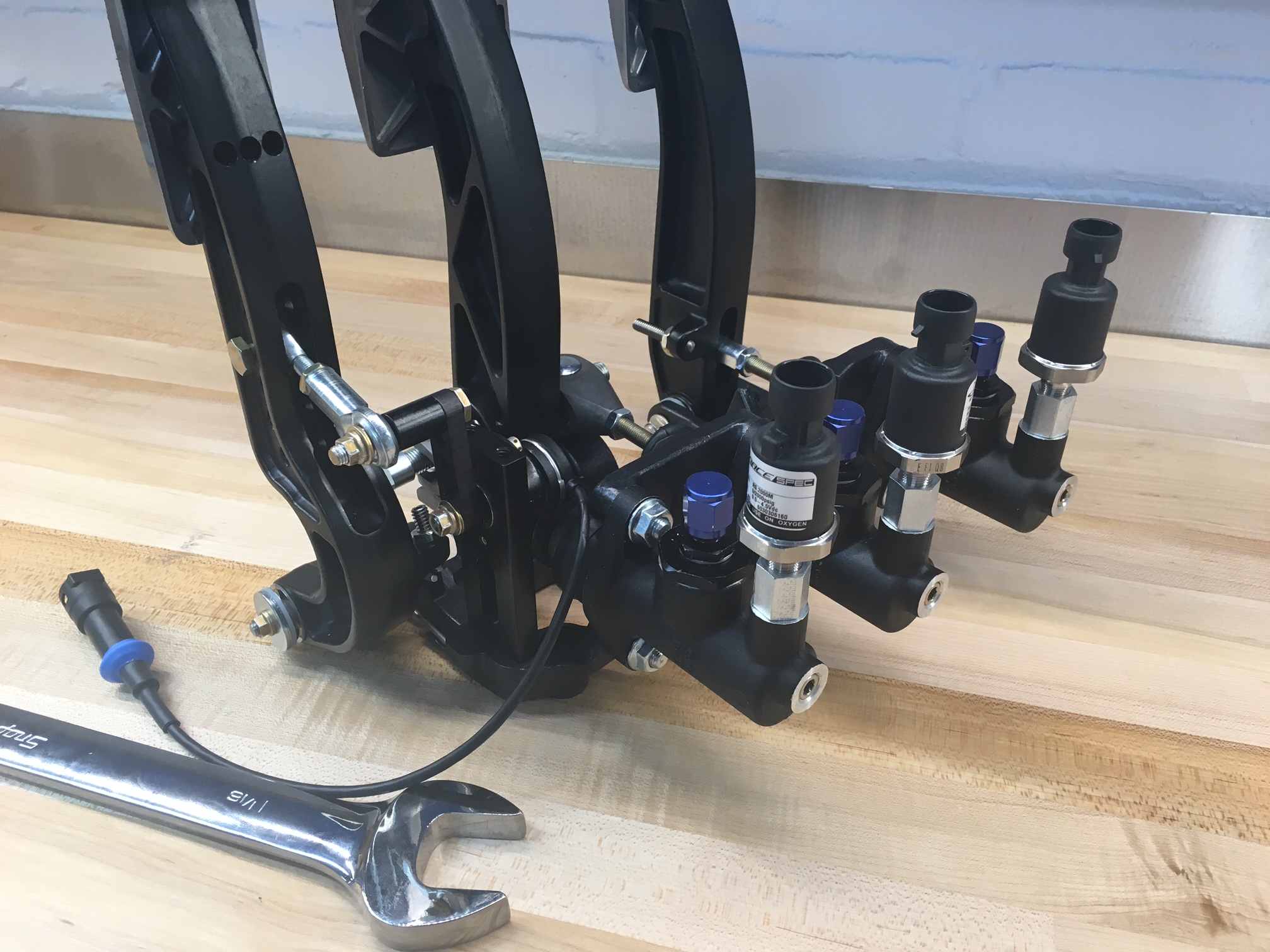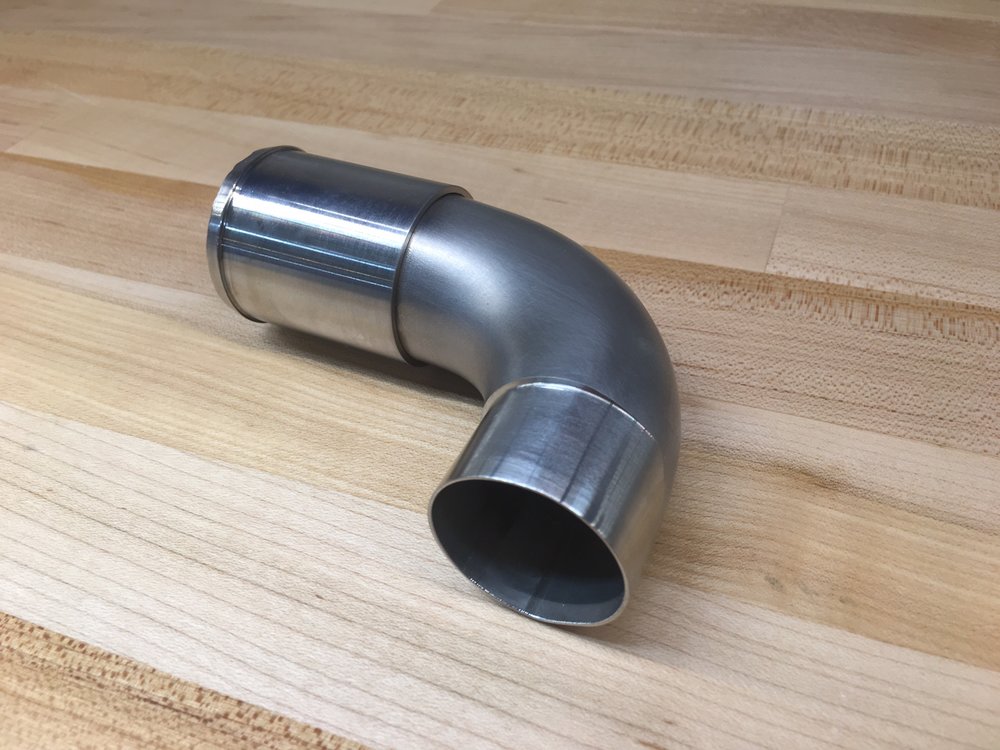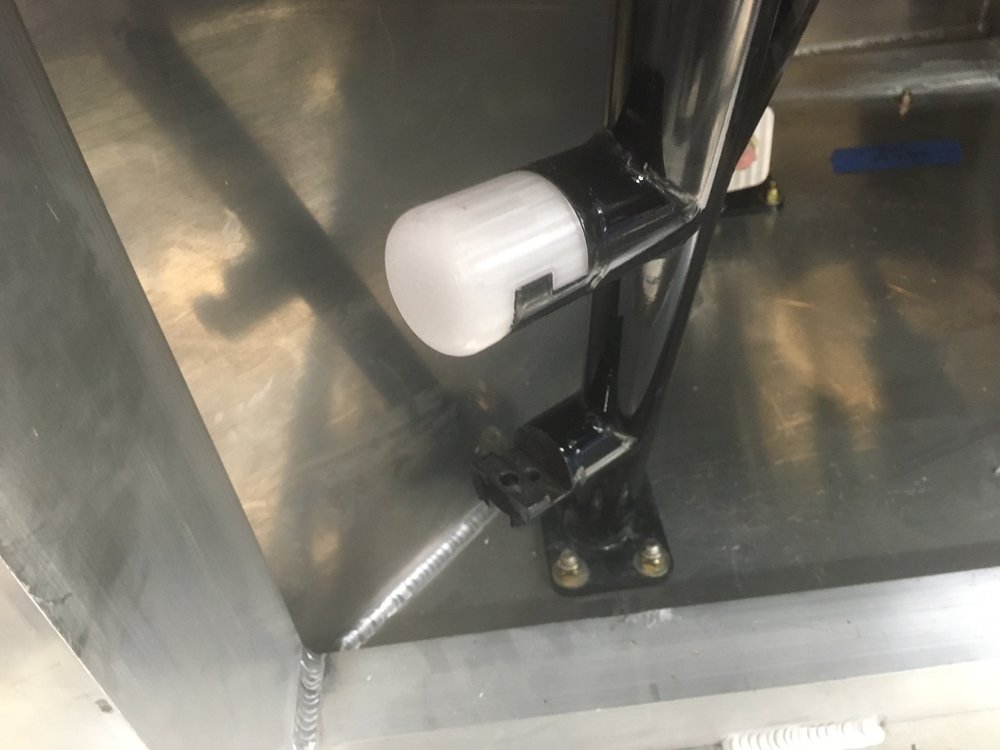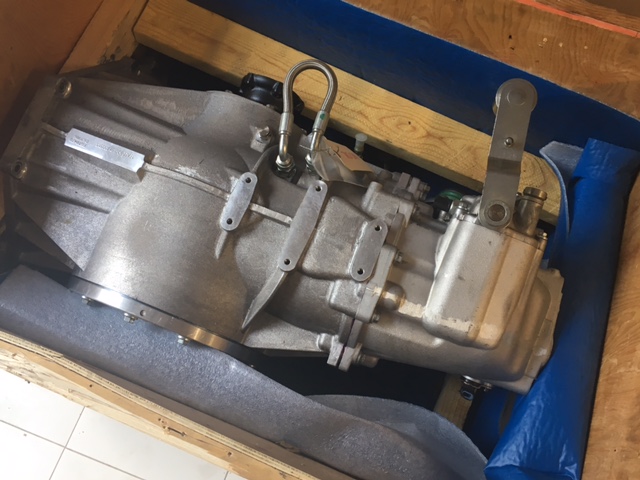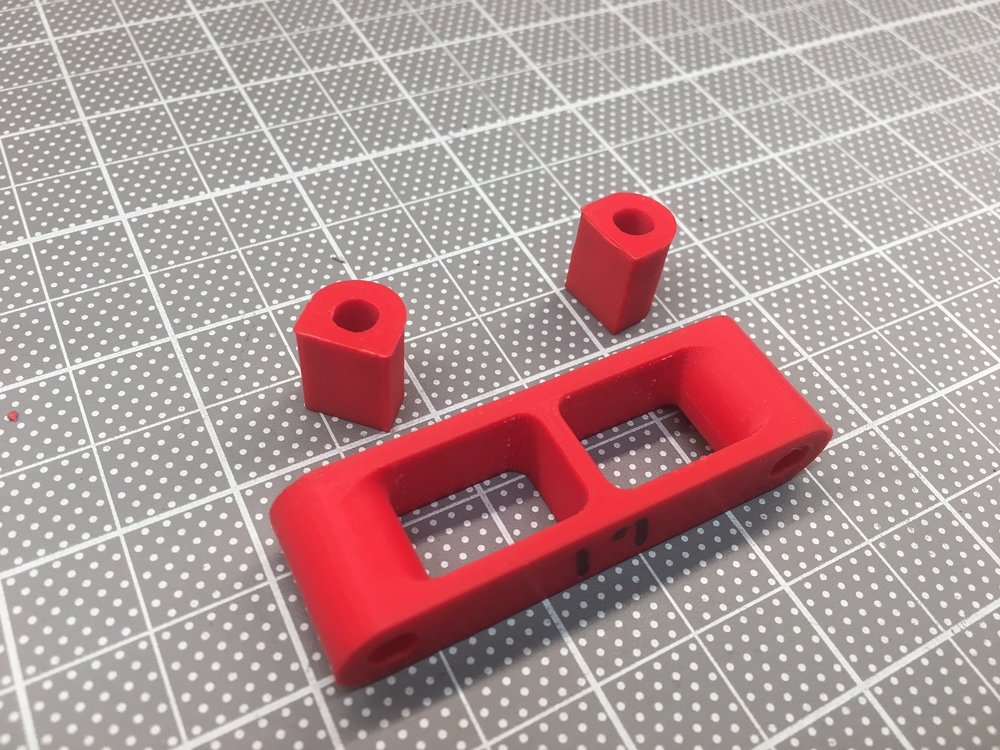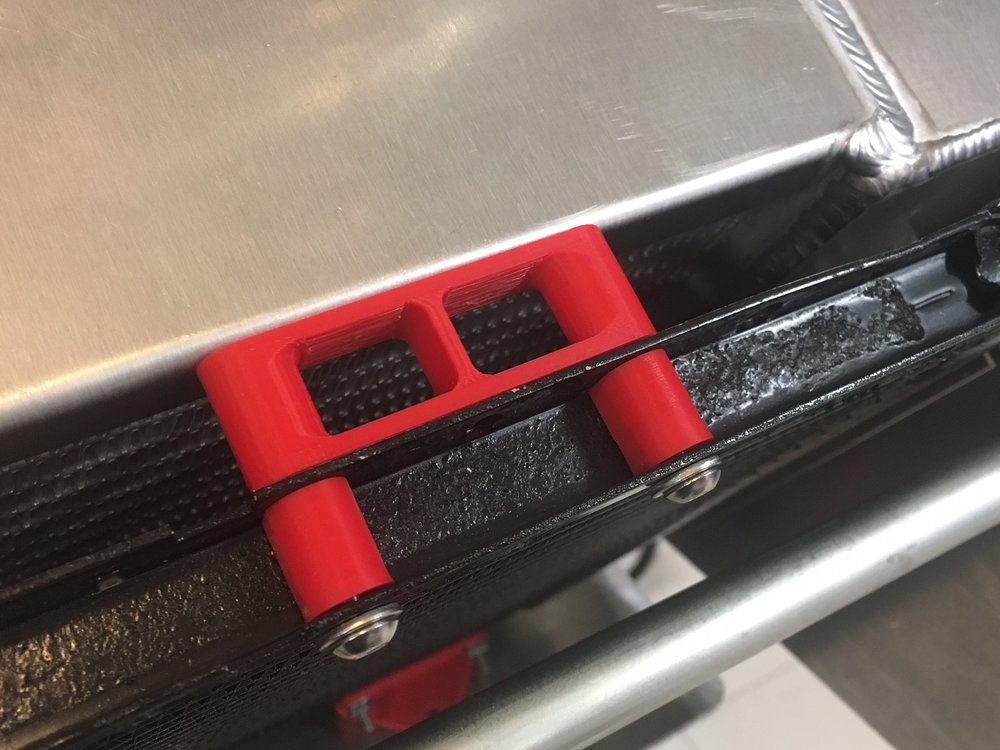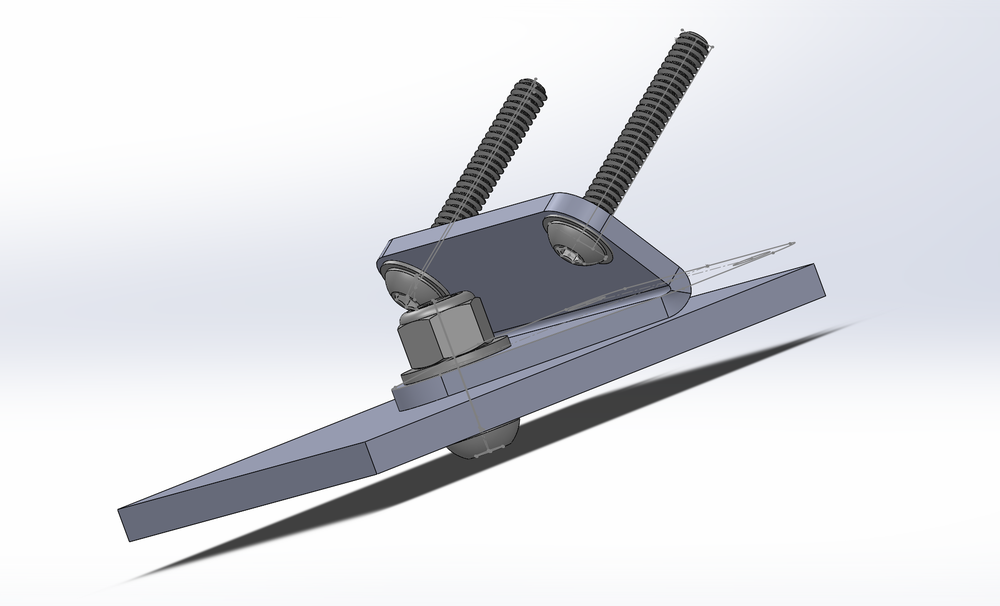Scott
Lifetime Supporter
John,
The rubber was the same that I used on the chassis and it was cut to fit the brackets. I am going to use one additional bracket under the large beam that runs across the tank to keep the tank from rocking backwards. The part numbers in the table below have links to the specs. You could get away with just one piece of the rubber, but two means that you don't need to be careful:
<table>
<tr><th>Qty.</th><th>Part Number</th><th>Description</th><th>Unit Price</th></tr>
<tr>
<td>4</td>
<td><a href="https://8020.net/4334.html">4334</a></td>
<td>80/20 Aluminum 4 Hole - Wide Gusseted Inside Corner Bracket</td>
<td align="right">$6.25</td>
</tr>
<tr>
<td>2</td>
<td><a href="https://8020.net/4134.html">4134</a></td>
<td>80/20 Aluminum 4 Hole - Wide Gusseted Inside Corner Bracket</td>
<td align="right">$5.65</td>
</tr>
<tr>
<td>2</td>
<td><a href="http://www.mcmaster.com/#1312n43/=13pgekr">1312N43</a></td>
<td>2" x 36" x 1/4" Ultra-Strength, Self Adhesive Neoprene<
(Durometer 70A - Hard)</td>
<td align="right">$29.98</td>
</tr>
</tbody>
</table>
I ordered the 80/20 parts from eBay. The shipping on a per part basis is really high but they explain how you can combine shipping.
The rubber was the same that I used on the chassis and it was cut to fit the brackets. I am going to use one additional bracket under the large beam that runs across the tank to keep the tank from rocking backwards. The part numbers in the table below have links to the specs. You could get away with just one piece of the rubber, but two means that you don't need to be careful:
<table>
<tr><th>Qty.</th><th>Part Number</th><th>Description</th><th>Unit Price</th></tr>
<tr>
<td>4</td>
<td><a href="https://8020.net/4334.html">4334</a></td>
<td>80/20 Aluminum 4 Hole - Wide Gusseted Inside Corner Bracket</td>
<td align="right">$6.25</td>
</tr>
<tr>
<td>2</td>
<td><a href="https://8020.net/4134.html">4134</a></td>
<td>80/20 Aluminum 4 Hole - Wide Gusseted Inside Corner Bracket</td>
<td align="right">$5.65</td>
</tr>
<tr>
<td>2</td>
<td><a href="http://www.mcmaster.com/#1312n43/=13pgekr">1312N43</a></td>
<td>2" x 36" x 1/4" Ultra-Strength, Self Adhesive Neoprene<
(Durometer 70A - Hard)</td>
<td align="right">$29.98</td>
</tr>
</tbody>
</table>
I ordered the 80/20 parts from eBay. The shipping on a per part basis is really high but they explain how you can combine shipping.
Last edited:

